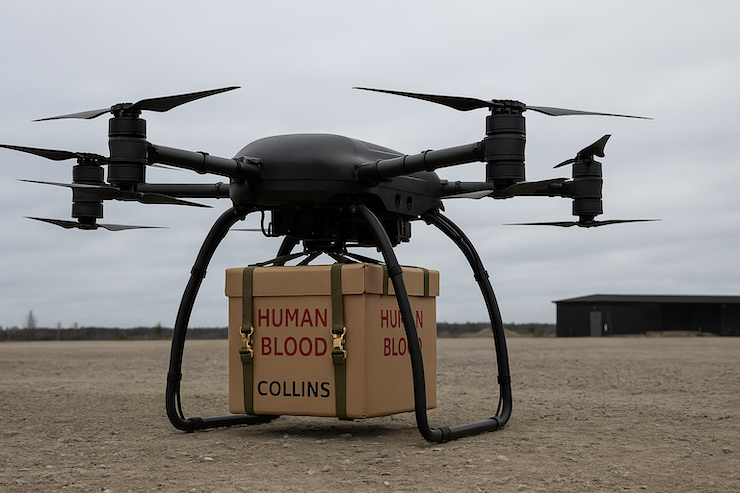Drones Deliver Blood to Battlefield in NATO Combat Test

On February 24, 2022, Russian President Vladimir Putin launched a full-scale invasion of Ukraine. A resolution remains elusive three years later despite multiple rounds of peace talks. The war has fundamentally reshaped modern combat by fully embracing drone technology. Ukraine, an underdog with a comparatively small army, has not only held off Russian forces but achieved several key successes thanks to its early adoption of novel drone platforms.
The conflict has transformed drones from support tools into frontline weapons, forcing militaries worldwide to rewrite combat protocols. What began with consumer-grade drones dropping grenades has evolved into coordinated drone strikes, real-time reconnaissance, and autonomous systems guiding artillery with lethal precision. The use of drones in this war has inspired both awe and alarm, highlighting the power and peril of unmanned warfare.
Now, as demonstrated by U.S. Army medics from the 173rd Airborne Brigade working in coordination with the North Atlantic Treaty Organization (NATO), drones can also bring hope to those on the front lines. One of the harshest realities of war is that injuries and casualties are often unavoidable. When they occur, it falls to field medics to provide emergency care with whatever limited supplies they have on hand.
The presence of a medic depends on the size of the deployed unit. Small squads of 8-12 soldiers typically have a team member trained in life-saving care but not a dedicated medic. Platoons of 30-40 may have just one medic assigned. These medics carry only what fits in their packs, and one of the most vital supplies, blood, cannot be transported easily in the field.
Traditionally, medics do what they can until they can either evacuate the patient or receive resupplied medical materials like blood. Delivery often takes 30 minutes and requires at least five additional personnel, all of whom are exposed to enemy fire. But in emergencies where seconds count, delays can mean the difference between life and death. Specialized cargo drones are changing that. They can deliver life-saving blood to the front lines in just minutes, without risking additional lives.
Dr. David Hourani, a civilian emergency medicine physician, believes this shift is the future of combat care. “Getting the supply of any sort of medical supplies forward can be difficult at times, and so in a large-scale combat operation, avoiding putting personnel in danger for those resupply operations is key,” he said. “Getting things such as blood or other medical supplies forward with drones simplifies that process, let’s us get medical supplies that we wouldn’t normally be able to get further forward on the battlefield to that place without putting additional personnel at risk.”
In May 2025, NATO conducted a series of military exercises known as Swift Response 2025, part of the larger U.S.-led DEFENDER Europe 25 program. One of those drills, the “Hospital Exercise” (HOSPEX), was held at the Pabrade Training Area in Lithuania. The goal was to test the feasibility of blood delivery using a TRV‑150 drone equipped with a specialized cargo basket. Lieutenant Colonel Ronnie Hill, a blood specialist with the U.S. Armed Services Blood Program in Europe, said the trial was a major success and was directly inspired by battlefield conditions in Ukraine.
The TRV‑150 drone is a joint development between the UK’s Malloy Aeronautics and SURVICE Engineering Company, based in Belcamp, Maryland. It’s a quad-frame electric vertical takeoff and landing (eVTOL) aircraft with two motors per arm. With a full payload, the drone weighs 150 pounds, can reach speeds of up to 67 mph, and has a flight endurance of approximately 36 minutes. In the trial, 18 units of simulated blood (roughly 2.25 gallons) were packed into a temperature-controlled Collins Box for transport. Once the drone reached the target area, the box was either dropped with a parachute after clearance or lowered by cable.
The exercise demonstrated that drones could deliver critical medical supplies quickly and safely under combat conditions. HOSPEX marked yet another step in the evolution of drone warfare and perhaps one of the most vital. As Lieutenant Colonel Hill noted, “This is absolutely game-changing.” This successful demonstration underscores how drones are not only reshaping how wars are fought but also how lives are saved. As conflicts grow more complex, innovations like these offer a glimpse into a more responsive and humane future for battlefield medicine.
|